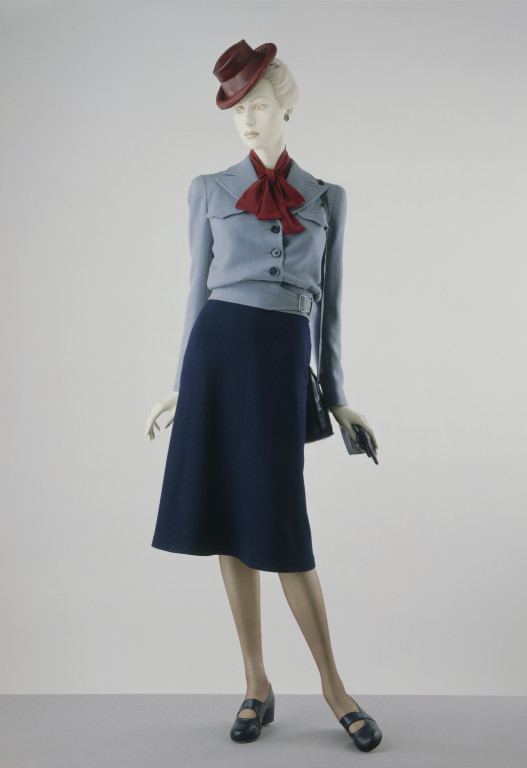Occupation Fashion designer Books South African childhood | Role Couturier Name Victor Stiebel | |
 | ||
Died 1976, London, United Kingdom People also search for Richard Addinsell, Annie Beatrice Richards, William Arthur Addinsell | ||
Education University of Cambridge | ||
Victor stiebel collection
Victor Frank Stiebel (1907–1976) was a South African-born British couturier. A founder member of the Incorporated Society of London Fashion Designers, he was among the top ten designers in Britain in the war and post-war years. Among his more famous designs was the going-away outfit for Princess Margaret's wedding in 1960.
Contents
Early life
Victor Frank Stiebel was born in 1907 in Durban, South Africa. He arrived in Britain in 1924 to study architecture at Jesus College, Cambridge.
Career

Having designed for theatre wardrobe at university, he worked as a dress designer for the House of Reville for three years beginning in 1929. Founded by Wallace Reville Terry and Miss Rossiter, Reville (also known as Reville-Terry and Reville & Rossiter) was one of the foremost court dressmakers and fashion houses in London before the First World War. Here Stiebel learned the art of fashion design, this being the method by which the trade was learned prior to fashion design courses being established at the art schools.

Steibel opened his own fashion house at 22 Bruton Street, just off Berkeley Square in 1932. This proved so successful that he was able to expand the showroom to the Georgian ballroom next door within a year. He was assisted by his sister Noelle Stiebel, who managed much of the business's administration. Celebrated interior designer Syrie Maugham created the all-white decor that was her trademark style and Constance Spry – who later became a firm friend – supplied the flowers for the showroom and his twice-yearly fashion shows.
Vogue said of his designs: "Stiebel has taken the lives and hearts and aspirations of Englishwomen and transmuted them into clothes, adding that touch of the artist, something that is rich and strange and exciting."
Wartime and post-war career
Stiebel enlisted for the Second World War in 1940, closing his house, but he was allowed to continue designing while involved with the services thanks to his involvement as a founder member of the Incorporated Society of London Fashion Designers, his designs being manufactured as part of the war effort using government stock fabrics. Called "Utility Fashion", each designer in the scheme produced a coat, dress, suit and shirt or blouse.
Stiebel returned to designing in 1946, succeeding Bianca Mosca as head of the house of Jacqmar, and becoming Chairman of the Incorporated Society of London Fashion Designers. He was commissioned to design new uniforms for the WRENS (1951) and the WRAF (1954).
He reopened his own house in 1958, having great initial success, including designing the going-away outfit for Princess Margaret on her marriage to Lord Snowdon in 1960. Stiebel was forced to close the business after just five years, in 1963, having become confined to a wheel chair as a result of multiple sclerosis. Hardy Amies took on all 120 of Stiebel's employees.
Personal life
Stiebel was, for many years, the companion of composer Richard Addinsell. In 1968, he published an account of his youth in South Africa.
